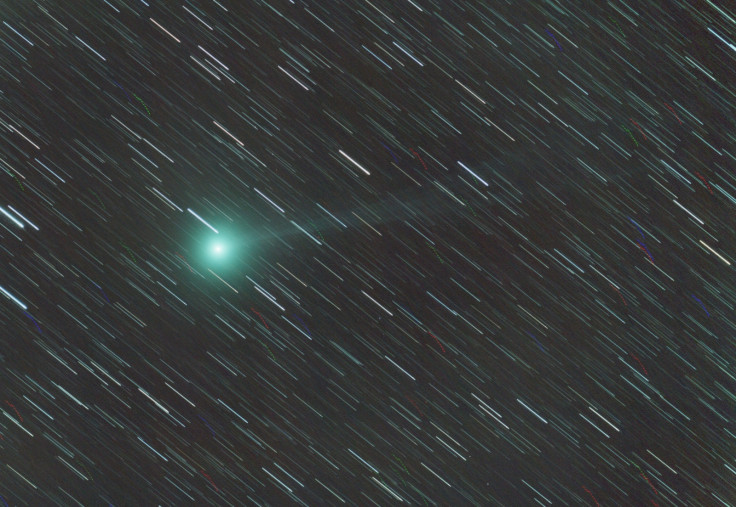The first-ever interstellar comet may just have been spotted zooming past Earth
The comet, which flew past Earth last week, is currently racing out of our Solar System, presumably, never to return.

Astronomers may have just spotted the first-ever interstellar comet zip across our Solar System. The hyberbolic trajectory of the comet, which appeared to not be bound to the sun, led astronomers to suggest that the comet, named C/2017 U PanSTARRS, may have escaped from another solar system.
The comet, which flew past Earth on 14 October at a distance of about 24,000,000 km (15,000,000 miles), is currently racing out of our Solar System, presumably, never to return. It is believed to have entered our Solar System travelling at a speed of 26 Kms per second, and may have come from the constellation Lyra, where the bright star Vega resides, Sky and Telescope reported.
"If further observations confirm the unusual nature of this orbit," Gareth Williams, the Minor Planet Center's associate director, said in a statement, "This object may be the first clear case of an interstellar comet."
"It could have interacted with Jupiter or another planet in such a way that changed its orbit," says Maria Womack at the University of South Florida in Tampa, New Scientist reported.
The comet was first discovered on 18 October by astronomers at the MPC, after it flew within 37,600,000 km (23,400,000 miles) of the Sun on 9 September. Such close proximity to the Sun would have been hazardous for a small comet.
"It went past the Sun really fast," dynamicist Bill Gray said, adding that the object "may not have had time to heat up enough to break apart." Gray estimated that the comet likely has a diameter of around 160 meters (525 feet), based on comet PanSTARRS' brightness.
There's a possibility that the comet could actually be an interstellar asteroid. According to a tweet posted by astronomer Tony Dunn, no "cometary outgassing" was observed coming from the object, which appears to have led to a name change for the object. "It seems its new name is A/2017 U1, where A stands for asteroid," Dunn tweeted.
Is comet #C2017U1 a visitor from another solar system? Here's a simulation of its current nominal orbit. This simulation will run in your browser.
— Tony Dunn (@tony873004) October 25, 2017
https://t.co/M1O5an87qk
Watch how fast it moves compared to a few other 2017 comet discoveries. pic.twitter.com/cq7U5eYKOu
With no cometary outgassing, it seems its new name is A/2017 U1, where A stands for asteroid. https://t.co/2wbnzQrGI0
— Tony Dunn (@tony873004) October 26, 2017






















